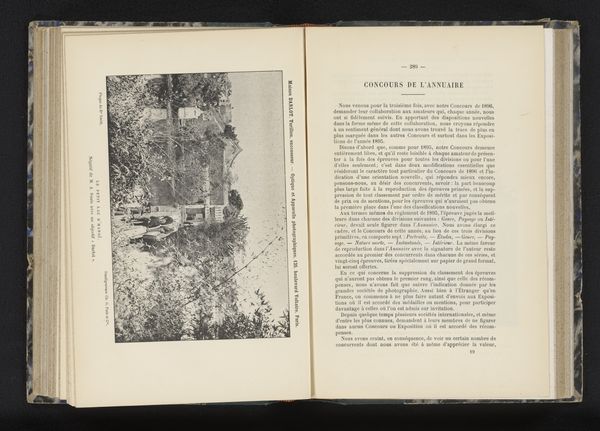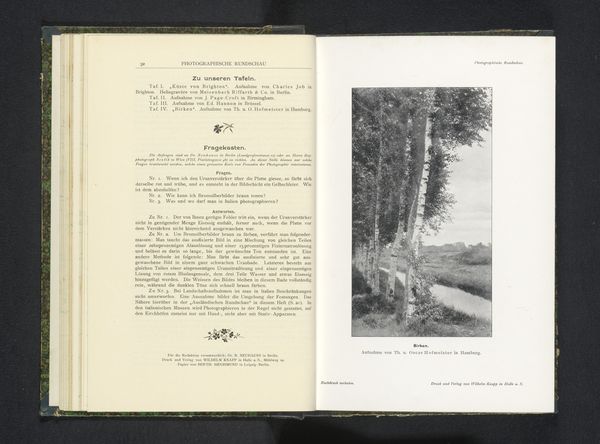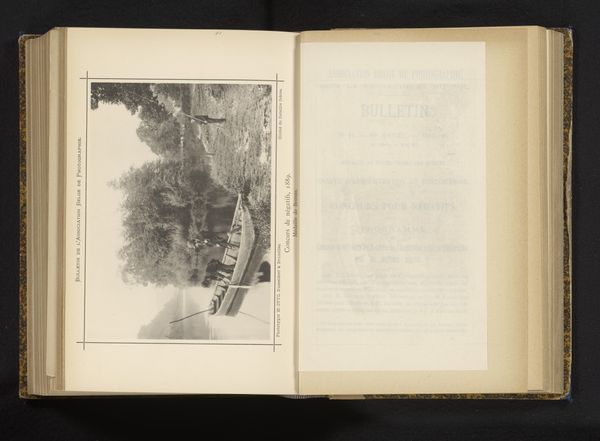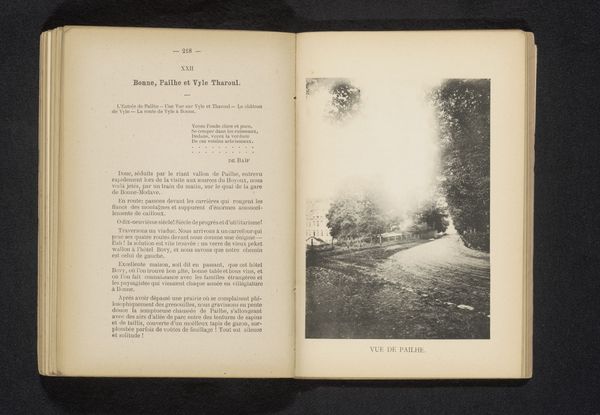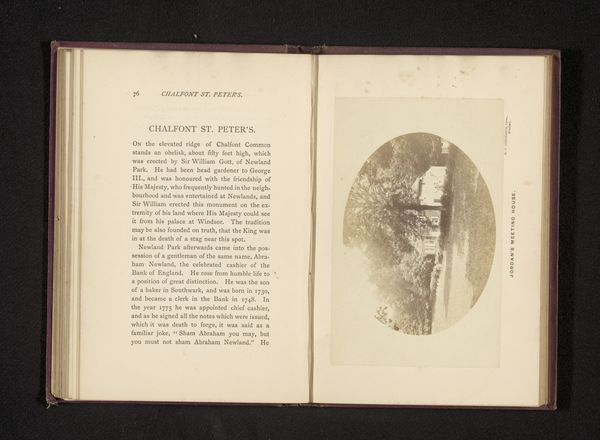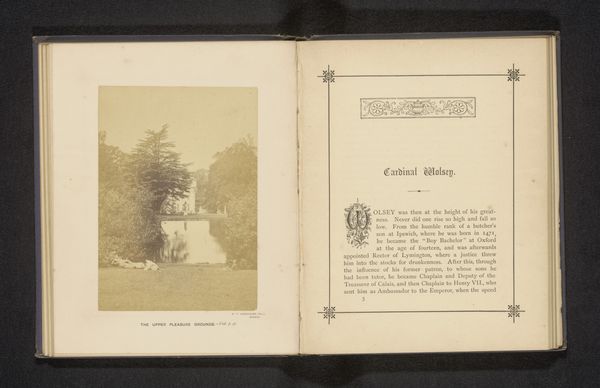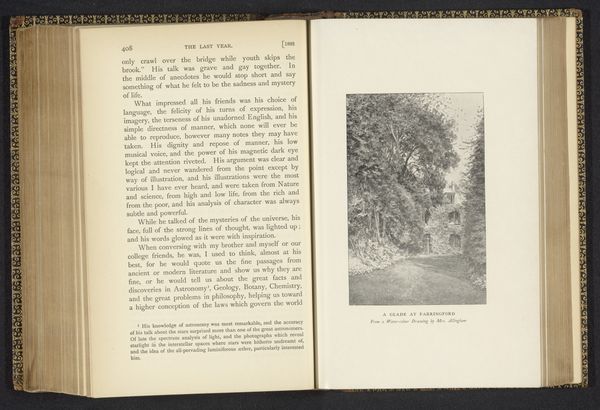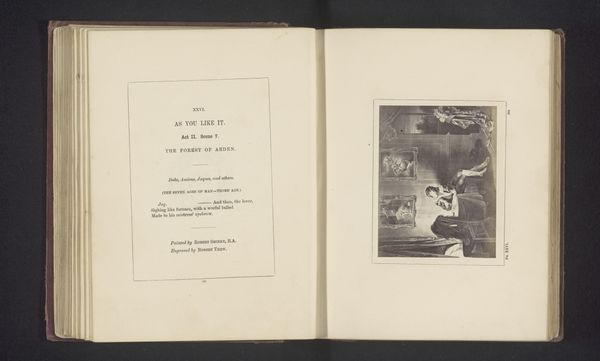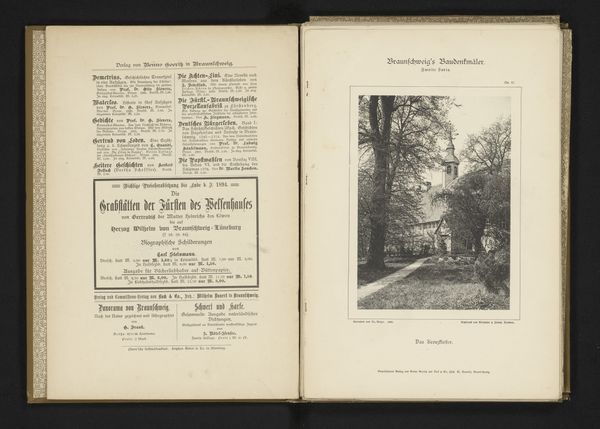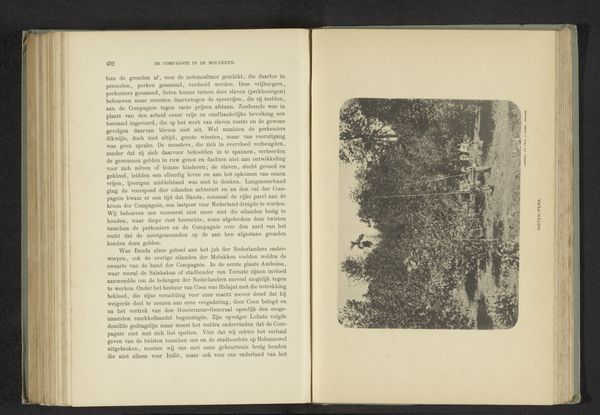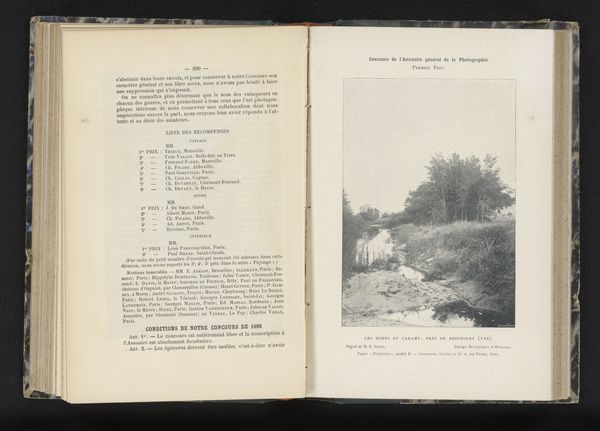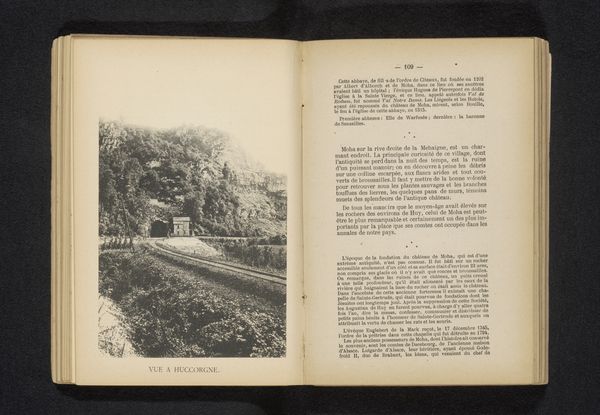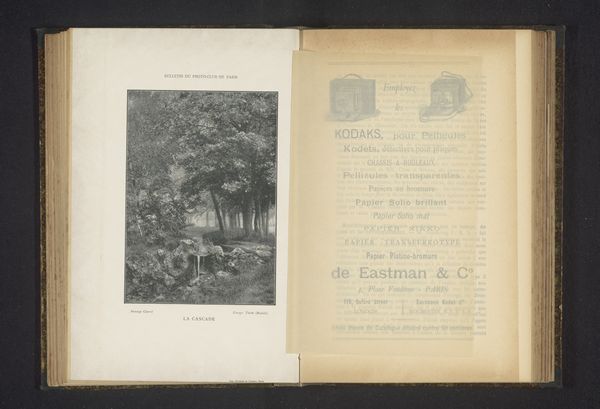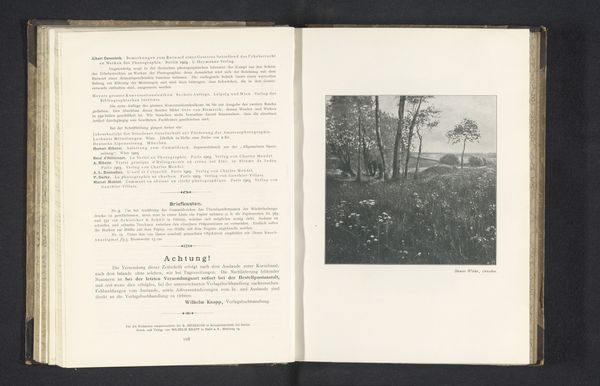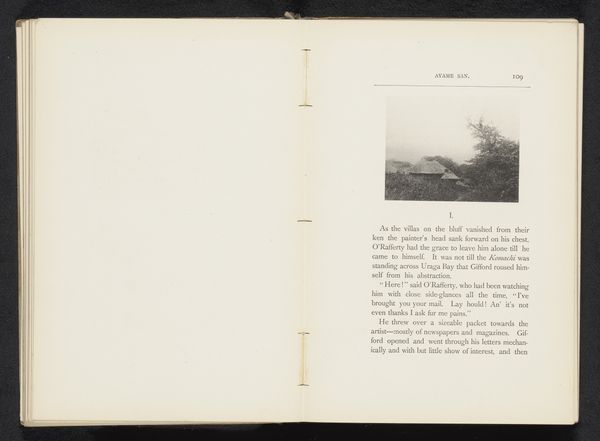
print, photography, gelatin-silver-print, albumen-print
#
portrait
# print
#
impressionism
#
landscape
#
photography
#
gelatin-silver-print
#
albumen-print
Dimensions: height 160 mm, width 116 mm
Copyright: Rijks Museum: Open Domain
Editor: Here we have "Man en vrouw op een brug over de Berwinne," created before 1886 by Georges Wilmotte. It’s a gelatin-silver print in an album. The hazy black and white image gives the whole scene a wistful, romantic feeling. What’s your take on it? Curator: Immediately, I see echoes of the idyllic pastoral scenes so beloved in art history. But filtered through the lens, quite literally, of burgeoning photographic technology. The figures themselves become part of the landscape, almost like nymphs presiding over a sacred spring. Notice how the bridge almost disappears into the greenery. Editor: It really does. What does that merging suggest? Curator: Perhaps that the artificial—the bridge as a symbol of human intervention—is being absorbed back into nature. This desire for harmony, this romantic retreat to nature...does that remind you of any artistic movements from the period? Think about the Impressionists, for instance. Editor: Ah, yes! They often depicted scenes of everyday life en plein air. The soft focus of the photo certainly fits with the Impressionistic aesthetic. Curator: Exactly. But even beyond that stylistic connection, this image encapsulates a yearning for a simpler, more natural existence—a feeling deeply embedded in the cultural consciousness of the late 19th century as industrialization took hold. Does that reflection on nature speak to a contemporary audience? Editor: Definitely, with concerns about climate change and a renewed interest in sustainability. It's funny how a photograph from so long ago can still resonate so strongly today. Curator: It really does provide continuity; an expression of the past, vividly preserved into the present. It offers a space to consider both the allure and illusion of idealized nature.
Comments
No comments
Be the first to comment and join the conversation on the ultimate creative platform.
